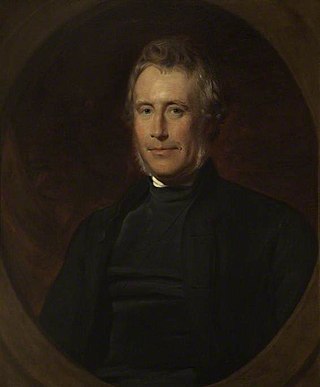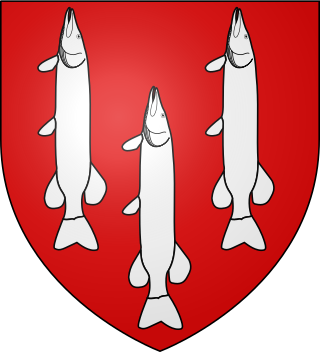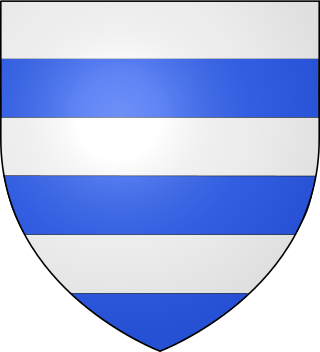
Henry, 3rd Earl of Leicester and Lancaster was a grandson of King Henry III of England (1216–1272) and was one of the principals behind the deposition of King Edward II (1307–1327), his first cousin.
Maud of Lancaster, also known as Matilda, Countess of Hainault, was a 14th-century English noblewoman who married into the Bavarian ducal family.
Baron Vavasour is an abeyant title in the Peerage of England. It was created in 1299 by writ of summons for William le Vavasour, who fought alongside Edward I at the Battle of Falkirk. The third baron was never called to Parliament, nor were any of his successors and the title became abeyant on the death of the de jure 25th baron in 1826. The de jure 19th Baron was granted the title of baronet, which became extinct at the same time as the barony's abeyance.

Edward le Despenser, 1st Baron Despenser was the son of another Edward le Despenser and Anne Ferrers, sister of Henry, Lord Ferrers of Groby. He succeeded as Lord of Glamorgan in 1349.
There have been five baronetcies created for persons with the surname Vavasour, three in the Baronetage of England and two in the Baronetage of the United Kingdom. As of 2008 four of the creations are extinct while one is extant.
John Burke was an Irish genealogist, and the original publisher of Burke's Peerage. He was the father of Sir Bernard Burke, a British officer of arms and genealogist.
This is a list of Sheriffs of Norfolk and Suffolk. The Sheriff is the oldest secular office under the Crown and is appointed annually by the Crown. He was originally the principal law enforcement officer in the county and presided at the Assizes and other important county meetings. After 1576 there was a separate Sheriff of Norfolk and Sheriff of Suffolk.

Robert John Eden, 3rd Baron Auckland, styled The Honourable Robert Eden from birth until 1849, was a British clergyman. He was Bishop of Sodor and Man from 1847 to 1854 and Bishop of Bath and Wells from 1854 to 1869.
Sir Thomas Moulton, Moleton, Muleton, or Multon, also recorded as Thomas de Moulton, Thomas of Moulton, etc., was an English landowner, knight, and judge during the reigns of King John and King Henry III. From a family with landholdings in the south of Lincolnshire, he was the son and heir of Thomas Moulton and his wife Eleanor Boston. After initial military service, he became a senior judge and held important government positions, in the process extending his inherited estates and accumulating considerable wealth.
The Sheriff of Nottinghamshire, Derbyshire and the Royal Forests is a position established by the Normans in England.

de Lucy or de Luci is the surname of an old Norman noble family originating from Lucé in Normandy, one of the great baronial Anglo-Norman families which became rooted in England after the Norman conquest. The first records are about Adrian de Luci who went into England after William the Conqueror. The rise of this family might have been due to Henry I of England, although there are no historical proofs that all de Lucys belonged to the same family.
William Willoughby, 6th Lord Willoughby was an English landowner and politician who sat in the House of Commons and later in the House of Lords. In 1666 he inherited the peerage of Baron Willoughby of Parham, and from 1667 he served as Governor of Barbados.
Alice Dudley, Duchess of Dudley, also known as Duchess Dudley, was the second wife of the explorer Sir Robert Dudley. In 1605, after giving birth to seven daughters, she was abandoned by her husband, who went into exile in Tuscany, remarried, and eventually sold his English estates. In 1644, by way of reparation for her losses, King Charles I created Alice Dudley a duchess in her own right "for her natural life", the dukedom thus created not being heritable.
John III Lestrange, of Knockin in Shropshire, landowner, administrator and soldier, was a marcher lord defending England along its border with Wales.

Richard Grey, 2nd Baron Grey of Codnor, of Codnor Castle, was an English soldier and diplomat.

Oliver de Vaux Patron of Pentney and Baron Dalston, was a 13th-century English nobleman.
Hubert de Vaux, also known as Hubert de Vallibus, was a prominent 12th-century English noble.
Robert de Vaux, also known as Robert de Vallibus,, Baron of Gilsland, was a prominent 12th-century English noble, who served as Sheriff of Cumberland in 1175 and 1176.
Edward Griffin of Dingley, Northamptonshire was an English landowner and lawyer. He was Solicitor General from 1545 to 1552 and Attorney General from 1552 to 1558.
Sir Charles Vavasour, 1st Baronet, of Killingthorpe was an English soldier who fought the insurgents in the Irish Rebellion of 1641 where he excelled at the Battle of Liscarroll in 1642 but was defeated in the Battle of Cloughleagh of the ensuing Irish Confederate Wars. After the cease-fire of September 1643 he was sent to England to fight the Parliamentarians in the First English Civil War, but his regiment mutinied and he resigned his commission, dying soon after in Oxford.






